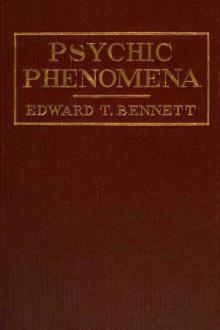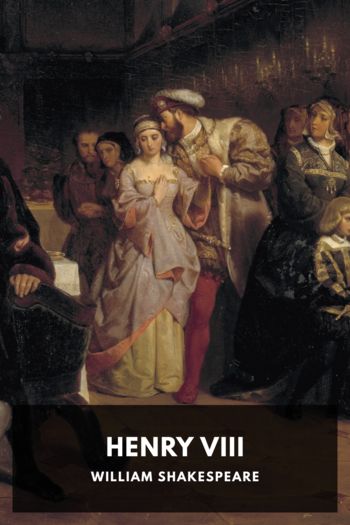Don Quixote by Miguel de Cervantes Saavedra (electric book reader TXT) 📕

Description
Don Quixote is a novel that doesn’t need much introduction. Not only is it widely considered the greatest Spanish literary work of all time, one of the greatest literary works in history, and a cornerstone of the Western literary canon, it’s also considered one of the first—if not the first—modern novels.
This Standard Ebooks edition is believed to be the first ebook edition of Don Quixote to feature a full transcription of translator John Ormsby’s nearly 1,000 footnotes. Ormsby as an annotator deftly explains obscure passages, gives background on the life and times of 1600s Spain, references decisions from other contemporary translators, and doesn’t hold back from sharing his views on the genius—and flaws—of Cervantes’ greatest work.
The story is of the eponymous Don Quixote, a country noble who, in his old age, reads too many chivalric romances and goes mad. After convincing his grubby servant, Sancho Panza, to join him as his squire, he embarks on an absurd and comic quest to do good and right wrongs.
Today Don Quixote’s two volumes are published as a single work, but their publication came ten years apart. Cervantes saw great success with the publication of his first volume, and appeared to have little desire to write a second volume until a different author wrote a spurious, inferior sequel. This kicked Cervantes into gear and he wrote volume two, a more serious and philosophical volume than the largely comic first volume.
Despite being written in 1605 and translated in 1885, Don Quixote contains a surprising amount of slapstick laughs—even for the modern reader—and narrative devices still seen in today’s fiction, including meta-narratives, frame narratives, and metafiction. Many scenes (like Quixote’s attack on the windmills) and characters (like Sancho Panza and Lothario) are so famous that they’re ingrained in our collective culture.
Read free book «Don Quixote by Miguel de Cervantes Saavedra (electric book reader TXT) 📕» - read online or download for free at americanlibrarybooks.com
- Author: Miguel de Cervantes Saavedra
Read book online «Don Quixote by Miguel de Cervantes Saavedra (electric book reader TXT) 📕». Author - Miguel de Cervantes Saavedra
Sano de Castilla—a slang phrase from the Germanía dialect for a thief in disguise (ladron disimilado—Vocabulario de Gemiania de Hidalgo). “Castellano” and “alcaide” both mean governor of a castle or fortress, but the former means also a Castilian. ↩
The lines quoted by Don Quixote and the host are, in the original:
“Mis arreos son las armas,
Mi descanso el pelear,
Mi cama, las duras peñas,
Mi dormir, siempre velar.”
They occur first in the old, probably fourteenth century, ballad of Moriana en un Castillo, and were afterwards adopted as the beginning of a serenade. In England it would be a daring improbability to represent the landlord of a roadside alehouse capping verses with his guest out of Chevy Chase or Sir Andrew Barton, but in Spain familiarity with the old national ballad-poetry and proverbs is an accomplishment that may, even to this day, be met with in quarters quite as unpromising. ↩
A parody of the opening lines of the ballad of Lancelot of the Lake. Their chief attraction for Cervantes was, no doubt, the occurrence of rocino (rocín) in the last line. ↩
The original has, la visera alzada, “the visor up,” in which case Don Quixote would have found no difficulty in feeding himself. Hartzenbusch suggests babera, beaver, which I have adopted, as it removes the difficulty, and is consistent with what follows; when the landlord “poured wine into him” it must have been over the beaver, not under the visor. ↩
“Pothouse”—venteril, i.e. such as only a venta could produce. ↩
The localities here mentioned were, and some of them still are, haunts of the rogue and vagabond, or, what would be called in Spain, the picaro class. The Curing-grounds of Málaga was a place outside the town where fish was dried; “the Isles of Riarán” was the slang name of a low suburb of the same city; the Precinct (compas) of Seville was a district on the river side, not far from the plaza de toros; the Little Market of Segovia was in the hollow spanned by the great aqueduct on the south side of the town; the Olivera of Valencia was a small plaza in the middle of the town; the “Rondilla of Granada” was probably in the Albayein quarter; the “Strand of San Lúcar” and the “Taverns of Toledo” explain themselves sufficiently; and the “Colt of Cordova” was a district on the south side of the city, which took its name from a horse in stone standing over a fountain in its centre. As Fermín Caballero says in a queer little book called the Geographical Knowledge of Cervantes, it is clear that Cervantes knew by heart the “Mapa picaresco de España.” ↩
In the original, blanca, a coin worth about one-seventh of a farthing. ↩
The passage as it stands is sheer nonsense. Clemencín tries to make sense of it by substituting “less” for “more”; but even with that emendation it remains incoherent. Probably what Cervantes meant to write and possibly did write was—“for that was another still more important matter, because,” etc. ↩
That is, inflicting two cuts that formed a cross. ↩
An old plaza in Toledo, so called probably from a family of the name of Ben Haya; or, as Pellicer suggests, from a corruption of Minaya. ↩
I.e. “the Milleress.” ↩
Labrador, the word used here to describe the status of Sancho, means, generally, a tiller of the soil, and includes farmers employing laborers, like Juan Haldudo the Rich, who is so described lower down, as well as those who tilled their land themselves or worked for others. Sancho was one of the latter class, as appears from a remark of his own in the Second Part. ↩
Cervantes now and then in dialogue does not specify the speaker, but the omissions are so rare that they are probably oversights, and I have generally supplied them. ↩
Haldudos—wearers of long skirts. ↩
Proverb 112. ↩
“Perfumed”—a way of expressing completeness or perfection of condition. ↩
An obscure oath, of which there is no satisfactory explanation as to who or what Roque was, whether the San Roque who gave the name to the town near Gibraltar, or some Manchegan celebrity. ↩
Not passages of the book, but passages of arms like that of Suero de Quiñones on the bridge of Orbigo in the reign of John II. ↩
It is strange that this passage should have escaped the notice of those ingenious critics whose mania it is to hunt for hidden meanings in Don Quixote. With a moderate amount of acumen it ought to be easy to extract from these words a manifest “covert attack” on Church, Faith, and Dogma. ↩
The Alcarria is a bare, thinly populated district, in the upper valley of the Tagus, stretching from Guadalajara to the confines of Aragón. Estremadura is the most backward of all the provinces of Spain. In elevating these two regions into the rank of empires, the waggish trader falls in with the craze of Don Quixote. ↩
Proverb 114. The ball, i.e., that on which it is wound. ↩
Civet was the perfume most in request at the time, and was imported packed in cotton. ↩
Mas derecho que un huso—“straighter than a spindle”—is a popular phrase in use to this day. The addition





Comments (0)